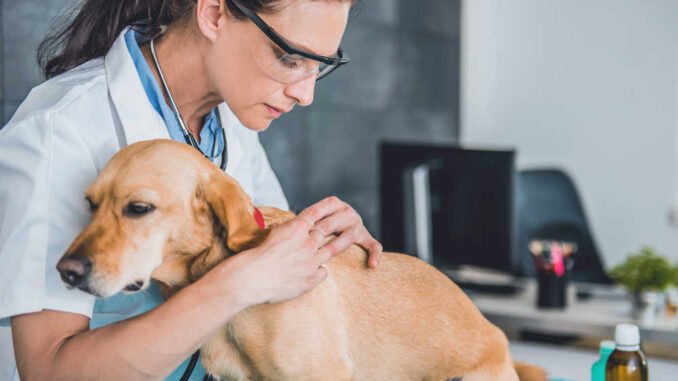
This article was updated on March 12th, 2024

When a dog does come into my clinic with a ruptured cyst, the owner can be quite alarmed by the gunk and discharge they’ve seen! It is usually a sebaceous cyst that bursts, and the insides can be a grey or white liquid and can even look a bit like cottage cheese. In this article, I’ll share important things you should know.
Things to know about a ruptured cyst
1. While there will be some mild discomfort, most dogs cope well with burst cysts
“Thankfully, cysts tend to be easy to treat and most cysts are well on their way to being healed within a few days of starting treatment. “
2. A burst cyst does require veterinary care
While we often take a ‘wait and see’ approach with a cyst, if it has burst or ruptured, it does require medical care, as Dr. Linda Simon explains:
“When a cyst on a dog has burst or ruptured, you should book an appointment with your vet: there is a risk of infection, inflammation, and potential discomfort or pain for the dog.”
Though a burst cyst isn’t a reason for high-tailing it to the nearest emergency clinic, you should book an appointment promptly to deal with the issue before it worsens.
At the clinic, your vet will confirm the diagnosis and check for signs of infection. They may drain any remaining cyst contents and flush out debris or dirt. If there are signs of infection, your dog will likely be started on a course of antibiotics.
3. It is crucial to prevent your dog from chewing or licking the burst cyst
When you notice a cyst on your dog, it’s important to prevent them from licking or chewing it while at home. To achieve this, you can make use of a buster collar or put on a loose cotton t-shirt for your furry friend. It’s not advisable to bandage the cyst as this may increase humidity, leading to bacterial growth.
If the fur is getting wet or matted from the discharge, we can trim it with scissors. The more ventilation around the cyst, the better.
Don’t be tempted to apply any human or OTC creams, as they’re generally not tolerated by dogs and may make them want to rub or lick the lesion more.
Importantly, owners should resist the temptation to squeeze or pick at it. This can introduce infection and may do more harm than good.
4. At home, you can try salt water with cotton wool for gentle cleaning
“Good old salt water really is your friend here, and it can be applied using cotton wool. Clean away as much of the ooze as you can, being gentle as your dog may be very sensitive in this area. You should reward your dog with lots of praise and a treat after the cyst has been cleaned. To make salt water, simply add a tablespoon of table salt to a mug of boiling water, stir and allow it to cool before using.”
You can also use antiseptics such as a medicated antiseptic spray, to protect the open cyst from developing an infection until you can reach the vet. Remember that first-aid at home is NOT a substitute for veterinary care (for example, gentle cleaning will not prevent infections). We also highly recommend that you talk to your veterinarian before trying any home remedies or first aid.
5. In the absence of an infection, cysts can seal over and heal rapidly
A small cyst may heal in a matter of days, while a longer one could take weeks. If it is infected, this will slow down the healing process and it won’t fully heal until the infection has gone. A dog who is young and in good health will also heal quicker when compared to a senior who has ongoing health issues such as endocrine disorders or chronic infections.
6. Costs of treating burst cysts can range from $50-100 (antibiotics) to $300-800 (surgery)
How the vet will want to treat your dog’s ruptured cyst will depend on the type of cyst, its size, and where it is located. There are two main scenarios:
1. In cases where a cyst is small and located in an area unlikely to bother the dog (such as on its back), the ruptured cyst may be treated with antibiotics and pain medications and then allowed to re-form. In most cases, these medications will cost from $50-100. If the cyst fails to heal, becomes chronically infected, or is bothersome to the dog, it will need to be removed surgically (see next section).
2. Surgery: surgery can be performed to remove the entire ‘cyst wall’ so that it will not re-form. Without removal of the entire wall of the cyst, it will most likely re-form. Ideally, the removed cyst would also be sent for analysis so the vet can confirm that it is indeed a cyst and that it has been completely removed. This surgery’s cost will vary, depending on the size and age of the dog, other conditions it may suffer from, and the size and location of the cyst. Typically, owners can expect to pay $300-800.
Potential additional costs: any lesions that are suspicious of cancer will need to be tested, which will incur additional charges. Uncommonly, the lab will diagnose a cancer called a sebaceous gland adenocarcinoma. It is important to know if this is what was removed from your dog, so your vet can check for any signs of cancer spread.
What do ruptured or burst cysts look like? (with pictures)
In the following image, we can see a sebaceous cyst, which has become very red and inflamed. We can see that ‘cottage cheese’ material, which is made from sebum. This cyst will have formed when the gland became blocked or damaged for whatever reason. Some dogs are more prone to them than others, with Spaniels and Schnauzers being overrepresented.
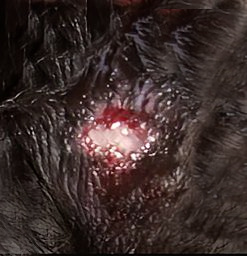
The next image is a ruptured follicular cyst, which is bleeding quite a lot. These cysts originate within the hair follicle and can cause quite large and raised lesions on the skin. While the discharge in this dog’s cyst is very bloody, we can also see clear, grey, or yellow ooze.
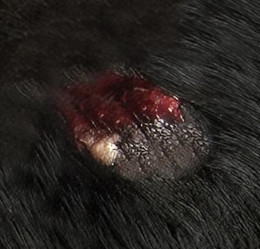
Below are pictures showing before and after rupture:
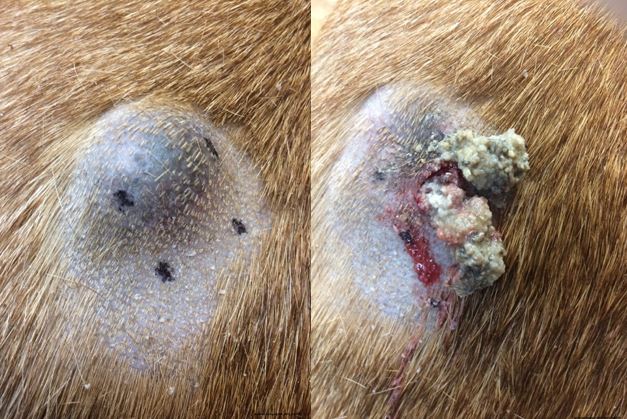
Photo: © Ian Brett Spiegel VMD, MHS, DACVD
An opened cyst on a golden retriever:
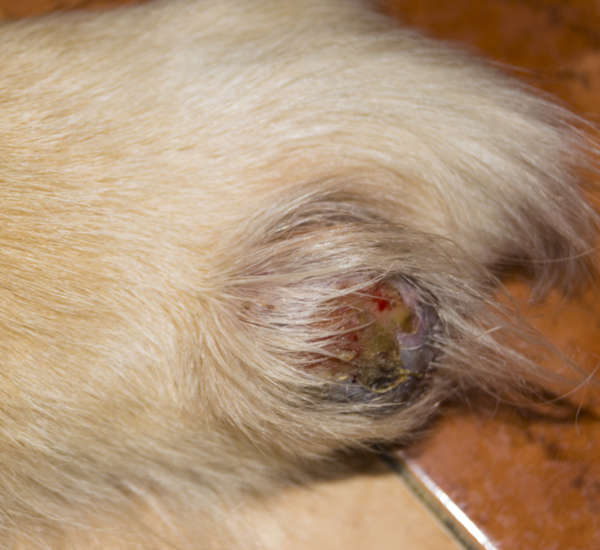
This fourth image below is a true cyst, which will contain a clear or transparent fluid. These cysts often form within the sweat glands, and we frequently see them on eyelids. These lesions usually form nodules and are see-through, blue, or dark.
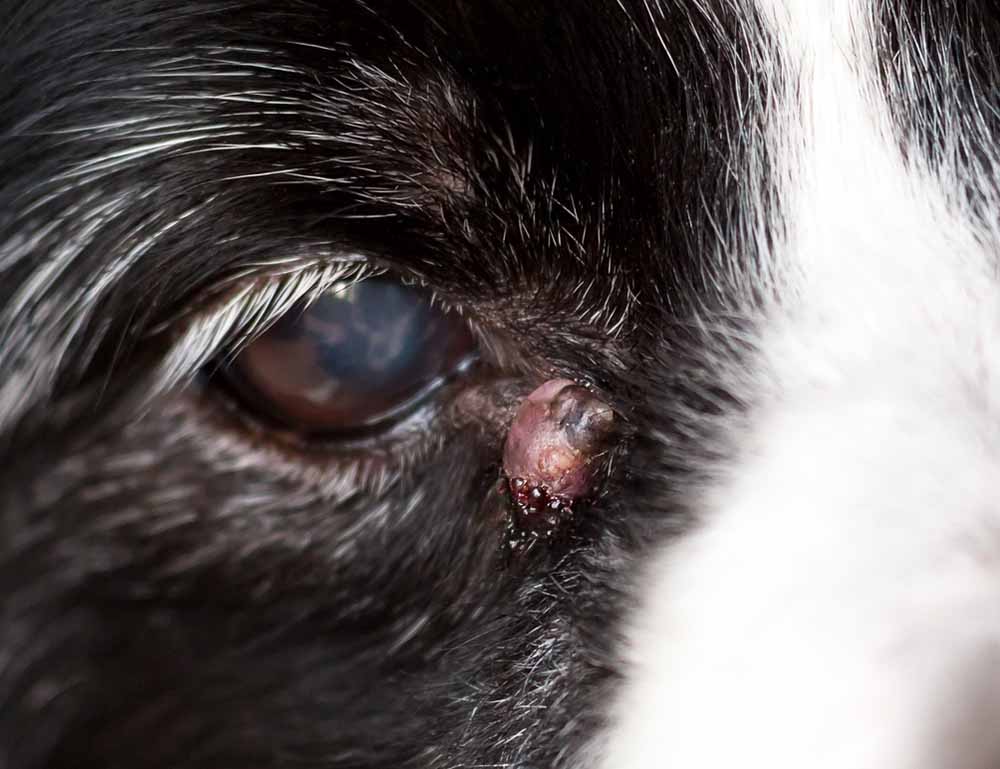
Cysts can burst or rupture because of an infection or trauma
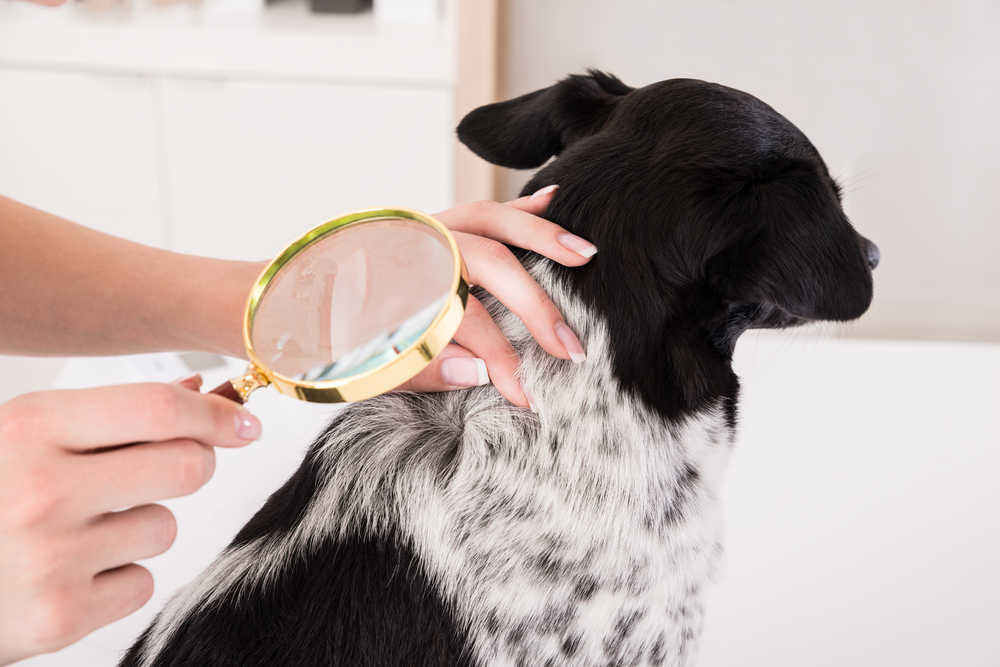
Cysts can rupture after developing an infection, as the increased amount of pus or white cells puts pressure on the cyst wall. We can also see burst cysts after a trauma, such as a sharp scratch from the dog or a nip from one of their doggy playmates.
Can I prevent cysts?
Some dogs are just genetically prone to getting cysts and there’s not much we can do to stop this. However, it can help to groom your dog regularly, to ensure their natural oils are being spread along their fur and to prevent fur mats. This also provides the perfect opportunity to check your dog over for any early cysts or masses. It’s a really good idea to check your dog’s skin regularly and to make note of any new growths. A new cyst can be photographed beside a coin, so you can monitor its progress and show it to the vet.
Related posts:
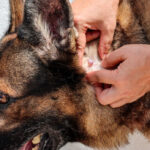 Types of Cysts Often Found on a Dog’s Neck or Head [Vet Advice] - Canine cysts of the head and neck are fairly common and most of them don’t cause serious problems. There are… [...]
Types of Cysts Often Found on a Dog’s Neck or Head [Vet Advice] - Canine cysts of the head and neck are fairly common and most of them don’t cause serious problems. There are… [...]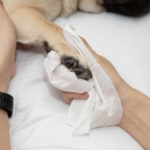 4 Cysts Often Found on Dog Paws [With Pictures & Vet Advice] - Ahh dog feet, giant Great Dane Marmaduke paws, tiny terrier tootsies, the puffy, fluffy white feet of a Bichon Frisé.… [...]
4 Cysts Often Found on Dog Paws [With Pictures & Vet Advice] - Ahh dog feet, giant Great Dane Marmaduke paws, tiny terrier tootsies, the puffy, fluffy white feet of a Bichon Frisé.… [...] Eyelid Cysts in Dogs: FAQ With Our Veterinarian - Eyelid cysts are very common, particularly in older dogs. Oftentimes, an owner is unaware that they’re present as they can… [...]
Eyelid Cysts in Dogs: FAQ With Our Veterinarian - Eyelid cysts are very common, particularly in older dogs. Oftentimes, an owner is unaware that they’re present as they can… [...]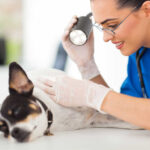 Dog Hair Follicle (Follicular) Cysts: Pictures + Vet FAQ - It is extremely common for dogs to develop lumps and bumps anywhere on their body. They can range in size,… [...]
Dog Hair Follicle (Follicular) Cysts: Pictures + Vet FAQ - It is extremely common for dogs to develop lumps and bumps anywhere on their body. They can range in size,… [...]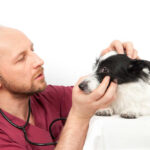 Eye Cysts in Dogs: Pictures & Vet Advice - Introduction: about eye cysts in dogs Finding an unexpected growth or mass on your dog can be distressing, but it… [...]
Eye Cysts in Dogs: Pictures & Vet Advice - Introduction: about eye cysts in dogs Finding an unexpected growth or mass on your dog can be distressing, but it… [...]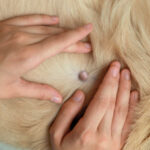 6 Types of Cysts in Dogs [With Pictures], and How to Treat - As a practicing veterinarian for over 17 years, I have treated hundreds of dogs with cysts. Cysts are a very… [...]
6 Types of Cysts in Dogs [With Pictures], and How to Treat - As a practicing veterinarian for over 17 years, I have treated hundreds of dogs with cysts. Cysts are a very… [...]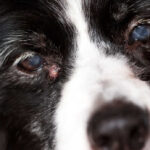 Sebaceous Cysts in Dogs [Pictures & Veterinarian Advice] - Sebaceous Cysts in dogs is one health issue for which dog owners should be watchful, but thankfully, they are rarely… [...]
Sebaceous Cysts in Dogs [Pictures & Veterinarian Advice] - Sebaceous Cysts in dogs is one health issue for which dog owners should be watchful, but thankfully, they are rarely… [...]Disclaimer: This website's content is not a substitute for veterinary care. Always consult with your veterinarian for healthcare decisions. Read More.



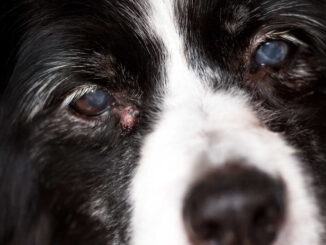
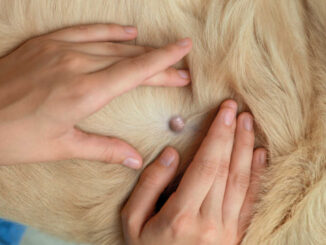
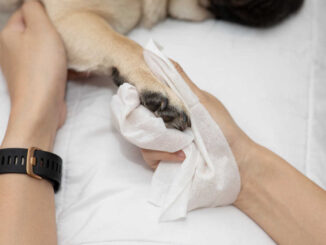
Be the first to comment